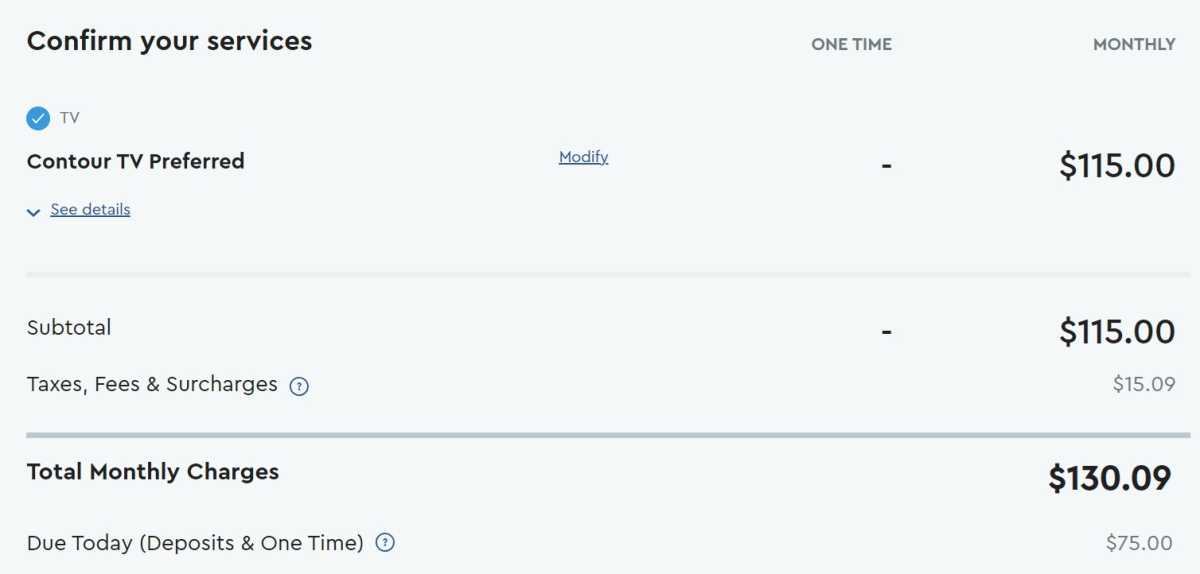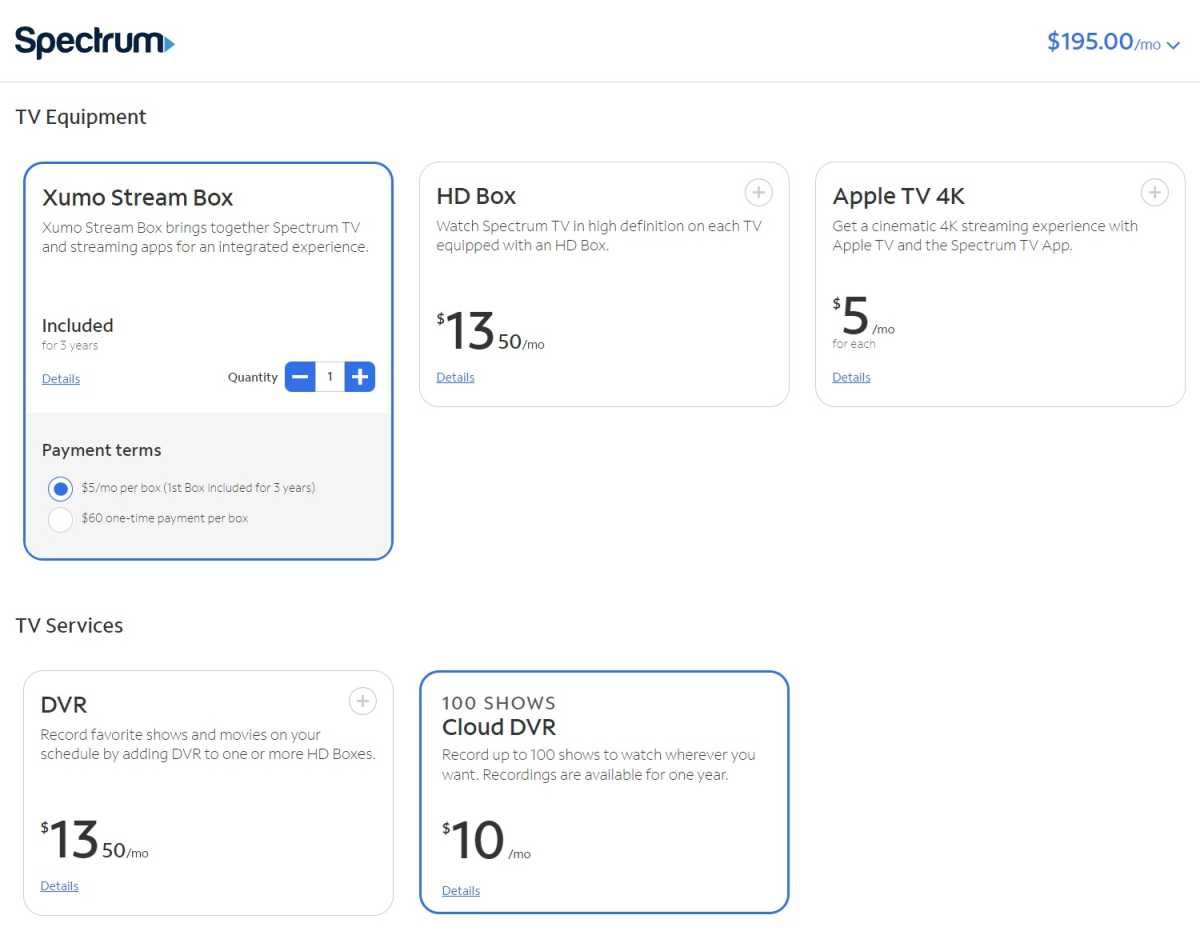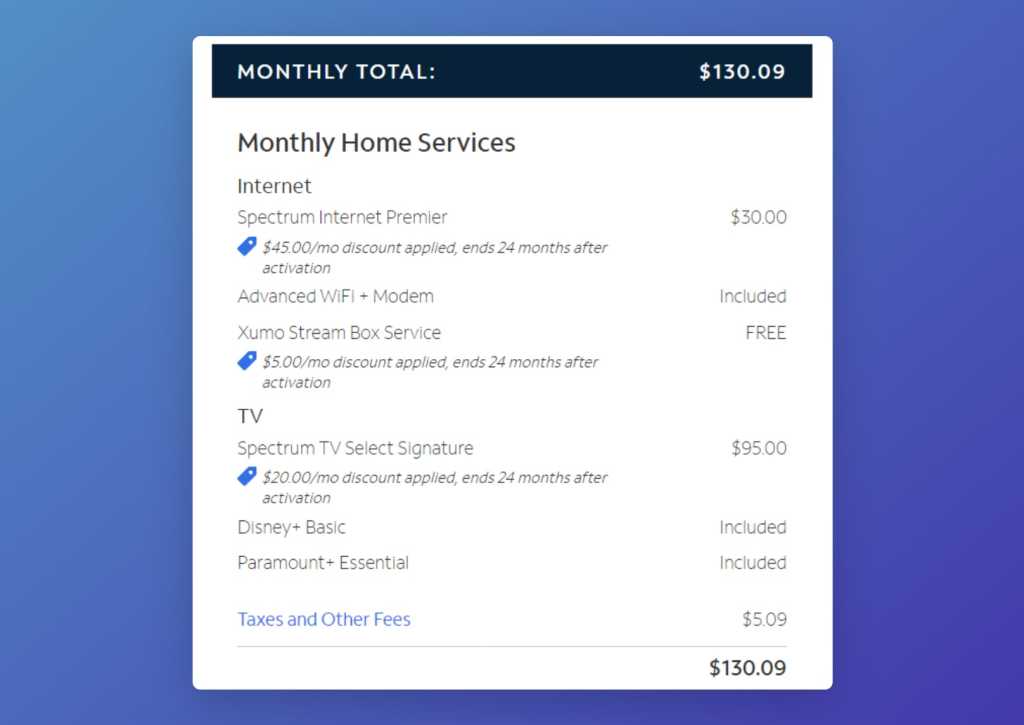A remarkable thing happened this week when I checked the price of Spectrum’s latest TV and internet bundles.
For new customers, Spectrum is currently advertising a bundle with 500Mbps internet and its standard “TV Select Signature” package for $125 per month over the first two years. Throughout the sign-up process, I kept waiting for Spectrum to slip in a broadcast TV fee, which usually adds about $26 on top of the advertised monthly price. Instead, the final checkout page only added about $5 for “Taxes and Other Fees,” which I assume is mostly sales tax.
Spectrum says it’s rolling fees into its advertised rates as part of a broader “consumer-first philosophy” that it’s embracing. But it’s also getting an early jump on new Federal Communications Commission rules that mandate “all-in” price disclosures for cable and satellite TV. Other providers will have to follow in the months ahead, which means comparing the cost of cable to streaming is about to get a lot easier.
The FCC’s new cable rules
Although Congress passed a cable bill transparency bill in 2019, the law still allowed TV providers to omit broadcast and regional sports fees from the listed price until the final checkout page. As I wrote a few years ago—in a story the FCC wound up citing in its “all-in” report and order—these providers continued to advertise misleading prices on their websites and in marketing materials. Some providers, such as Cox, still don’t reveal actual pricing until you agree to a credit check.

Cox doesn’t mention an extra $15 in fees until you submit to a credit check.
Jared Newman / Foundry
The FCC voted to approve “all-in” pricing rules in March after proposing them last year. The rules say that cable and satellite providers must roll all programming-related fees—including broadcast TV and regional sports fees—into their advertised pricing, not just at checkout.
Major cable and satellite providers will have to comply as soon as December 19, nine months from when the FCC released the new rules, though a required Paperwork Reduction Act review by the U.S. Office of Management and Budget could extend the deadline if the review isn’t finished by then. Smaller cable companies will get an extra four months to comply.
Collectively, cable companies aren’t happy about it. NCTA–The Internet & Television Association–a cable lobbying group, argued against the new FCC rules, claiming that cable TV pricing isn’t misleading, that fierce competition in the TV business keeps providers honest, and that the FCC lacks the authority to enforce all-in pricing rules anyhow.
Fortunately, common sense prevailed with the FCC, and now Charter, which operates the Spectrum brand, has seen the light as well. The company now says it’s implementing “whole dollar pricing, with taxes and fees included.” (In light of that statement, I’ve asked the company why I still saw $5 in “Taxes and Other Fees” in my testing.)

Comcast’s fine print still hides up to $36.60 in programming-related fees.
Jared Newman / Foundry
Other providers aren’t quite there yet. Comcast, for instance, still advertises a base price of $50 for a standard TV package as part of a home internet bundle, with an additional $31 in broadcast and regional sports fees buried in the fine print. Cox still shows a price of $115 per month for a standard TV plan, hiding an extra $15 in fees, taxes, and surcharges until you complete a credit check. In a few months, they’ll have to do things differently whether they want to or not.
Not cheaper, just clearer
The end of broadcast TV and regional sports fees won’t make cable or satellite TV any cheaper, nor does it eliminate all the ways that cable companies can inflate your bill.
Spectrum, for instance, still charges an extra $10 per month for cloud DVR service, and the Xumo streaming boxes it supplies by default cost $5 per month a piece, with fees for the first box waived for three years. Invoking the option to use Spectrum’s free apps on your own streaming devices is unintuitive: You must click the Xumo button so that it’s un-highlighted.

With Spectrum, DVR and equipment fees can still apply.
Jared Newman / Foundry
And yes, Spectrum is still hooking people in with promotional rates. The aforementioned $125-per-month bundle of Internet and TV only applies for two years. After that, the price jumps by $20 per month for TV service and $45 per month for internet, for a total of $190 per month. You shouldn’t have to enter any personal information—not even an address—to see non-promotional pricing and DVR fees.
But streaming services are falling into many of the same dark patterns—Fubo, for instance, hides regional sports fees from its own advertising—and simply knowing the base cost of cable programming will make comparison shopping easier.
To that end, Spectrum’s new TV strategy involves bundling a marginally lighter package of cable channels with ad-supported steaming services such as Disney+ and Paramount, plus discounts for tying in home internet and cellular service. Under the right conditions, that could be a better value than paying for a bunch of steaming services and internet separately, and now you can make that calculation without jumping through as many hoops.
Cord-cutting was never going to destroy cable companies outright, but at least it can make them compete against streaming services without relying on deception. I’m glad that’s finally happening—even if the cable companies needed some government-mandated help getting there.
Sign up for Jared’s Cord Cutter Weekly newsletter for more streaming TV insights.

